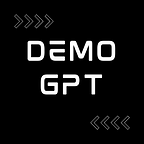🎯Step-by-Step Guide: Installing and Using Llama 2 🦙 Locally
Welcome to this comprehensive guide on how to install and use Llama 2 locally. This guide will also touch on the integration of Llama 2 with DemoGPT, an innovative tool that allows you to create LangChain applications using prompts. Let’s dive in!
Introduction to Llama 2
Llama 2 is a state-of-the-art open-source language model developed by Meta. It’s a transformer-based model that has been trained on a diverse range of internet text. However, unlike traditional transformer models, Llama 2 has been trained on massive dataset and fine-tuned with RLHF strategy.
Llama 2 comes in three different sizes: 7B, 13B, and 70B parameters. The larger the model, the more powerful and accurate it is, but it also requires more computational resources.
Installing Llama 2
Before we can start using Llama 2, we need to install it. Here are the steps to do so:
- First, you need to fill this form.
- Then, you need to install the Hugging Face Transformers library. You can do this by running the following command in your terminal:
pip install transformersUsing Llama 2
After installing Llama 2, you can use it in your Python scripts as follows:
from transformers import AutoTokenizer
import transformers
import torchmodel = "meta-llama/Llama-2-7b-chat-hf"
tokenizer = AutoTokenizer.from_pretrained(model)
pipeline = transformers.pipeline(
"text-generation",
model=model,
torch_dtype=torch.float16,
device_map="auto",
)
sequences = pipeline(
'I liked "Breaking Bad" and "Band of Brothers". Do you have any recommendations of other shows I might like?\n',
do_sample=True,
top_k=10,
num_return_sequences=1,
eos_token_id=tokenizer.eos_token_id,
max_length=200,
)
for seq in sequences:
print(f"Result: {seq['generated_text']}")In this code snippet, we first import the necessary classes from the Transformers library. We then create instances of the Llama 2 tokenizer and model. We use the tokenizer to convert our input text into a format that the model can understand, and then we pass these inputs to the model to get our outputs.
Llama 2 and DemoGPT
DemoGPT is an open-source project that allows you to create LangChain applications using prompts. It leverages the power of Llama 2 to generate interactive Streamlit apps. With just a prompt, you can create an app that showcases the capabilities of LangChain and Llama 2.
To use DemoGPT, you first need to install it. You can do this by running the following command in your terminal:
pip install demogptOnce DemoGPT is installed, you can use it by running the following command in your terminal:
demogptThis will launch the DemoGPT application, where you can enter your prompts and generate your LangChain apps.
In the next release of DemoGPT, Llama 2 will be integrated into the system, making the whole system runnable completely locally.
Conclusion
Llama 2 is a powerful language model that can generate human-like text. It’s easy to install and use, and it can be integrated with tools like DemoGPT to create interactive applications. Whether you’re a developer looking to incorporate advanced language models into your projects, or a researcher exploring the capabilities of transformer models, Llama 2 is a tool worth exploring.
For more information on Llama 2 and DemoGPT, you can visit the following links:
- Llama 2 Blog Post
- Llama 2 Documentation
- LangChain Llama Integration Documentation
- DemoGPT GitHub
- DemoGPT Website
Happy coding!
⭐If you find this guide helpful, you can consider starring 🧩DemoGPT on GitHub!
